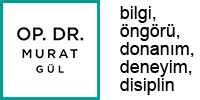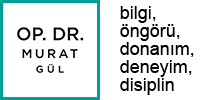Adenovirus Infections and Treatment
Approximately 19 out of 40 adenovirus serotypes can cause eye infections. These infections present in two clinical forms:
✔ Pharyngoconjunctival fever (PCF)
✔ Epidemic keratoconjunctivitis (EKC)
The disease spreads via direct contact or airborne transmission. Diagnosis is primarily clinical, as laboratory and pathological tests have limited use in viral infections.
Pharyngoconjunctival Fever (PCF)
✔ Adenovirus types 3, 4, and 7 are commonly responsible.
✔ Symptoms include:
- Swelling of preauricular lymph nodes
- Watery discharge from the eye
- Redness and swelling of the conjunctiva (chemosis)
✔ Corneal involvement is rare, but when present, it may cause foreign body sensation and blurred vision.
✔ Symptoms usually resolve within two weeks.
Epidemic Keratoconjunctivitis (EKC)
✔ Adenovirus types 8, 19, and 37 are commonly involved.
✔ More severe than pharyngoconjunctival fever.
✔ The prodromal period (incubation phase before symptoms appear) lasts 6–12 days.
✔ Symptoms include:
- Swollen preauricular lymph nodes
- Excessive watery and mucous discharge
- Severe conjunctival redness and swelling
- Subconjunctival hemorrhages (bleeding under the conjunctiva)
- Formation of pseudomembranes or true membranes (causing adhesion between the conjunctiva and eyelid)
✔ By days 6–13, corneal epithelial involvement may cause foreign body sensation and reduced vision.
✔ By day 14, 25–50% of cases develop subepithelial corneal opacities, leading to vision loss and halos around lights.
✔ The disease typically resolves within 7–21 days.
Treatment
✔ The goal is to relieve symptoms while the immune system fights the infection.
✔ Supportive treatments include:
- Cold compresses to reduce inflammation.
- Vasoconstrictive agents to minimize redness.
- Artificial tears to alleviate dryness.
- Topical corticosteroids in cases of severe inflammation or corneal involvement.

